Hussam al-Mahmoud | Khaled al-Jeratli | Lujain Mourad | Diana Rahima
On the border triangle between Syria, Jordan, and Iraq, the Rukban camp was established on desert land in 2015, under pressure from the need to shelter tens of thousands of Syrians fleeing from different areas in the governorates of Raqqa, Deir Ezzor, and the eastern countryside of Homs.
The people were trying to cross into Jordan after the Islamic State (IS) group took control of quite a few areas in eastern Syria at the time.
After Jordan prevented the “fugitives” from entering through it, the displaced were stuck in a camp set up without standards that make it fit for habitation, and then its population shrank to about eight thousand people, and many crises followed and reappeared after being temporarily resolved.
Since the beginning of August, calls and demands to save the Rukban camp have risen due to the severe shortage of drinking water in conjunction with a sharp rise in temperatures.
This crisis was paved by the United Nations Children’s Fund (UNICEF), reducing the quantities of water coming from Jordan on 29 May, in addition to a suffocating siege imposed by the Syrian regime for years, preventing UN aid convoys from entering the camp.
Jordan also closed the only medical point in the camp in 2020 as part of what it said were measures to limit the spread of the Covid-19 pandemic, but the small dispensary has remained closed since that time, depriving the displaced people of an essential medical outlet for the camp.
With a group of researchers and specialized experts, Enab Baladi discusses the issue of the siege of the Rukban camp that has lasted for years, the humanitarian situation, the resulting effects, the role of the concerned countries and organizations, in addition to advocacy efforts and the options available to the Rukban IDPs.
Water is a priority
The camp’s residents stress the priority of water in light of the current circumstances due to the severe shortage in securing the necessities of life, the desert climate, the high temperatures above 40 degrees Celsius, and the squalid tents built in the desert sands, all of which double the need for water and increase its consumption.
At the end of May, UNICEF reduced the amount of water supplied to the Rukban camp to half the usual amount it pumps from Jordanian territory.
The director of the Better World organization, which is responsible for distributing water under the supervision of UNICEF, refused to make any statement to Enab Baladi about the matter. He also asked not to be named for security reasons, requesting that questions be directed to UNICEF.
The director of the organization told Rukban Network that “Better World” is responsible for distributing water and supervising it on the eastern side of the refugee camp, stressing that it is not the party responsible for reducing the water shares.
Abu Kareem, the director of the Palmyra (al-Tadmori) neighborhood school in the camp and a resident there since 2016, told Enab Baladi that the lack of water supply from the Jordanian side and the inability of the residents to drink from the areas’ wells, in addition to its distance from the camp, and the high costs of water transportation, all contributed to the deepening of the tragedy, given that the cost of transporting one water tanker amounts to 75 US dollars, due to the far distance of the wells and the high prices of fuels.
On 10 August, the Maghawir al-Thawra Army, located in the American al-Tanf garrison (next to the camp), opened a water well near the camp (al-Khaffa) in order to alleviate the suffering of the people, which has been going on at a high rate for months.
Maghawir al-Thawra is working on transferring drinking water to the camp from the Daqqa well, but the well’s water needs desalination, which makes it unfit for drinking.
The water reaches the camp through the western point, which is about five kilometers away, and its water is transferred to the residents through tankers to a point adjacent to the camp, where the displaced get their water through carts and small vehicles.
Fraught with suffering
The alternation of forms of suffering inside the camp reduced the total number of its residents from about 70,000 people before 2018, to only thousands of residents, as the tragedy that the camp’s residents are experiencing is not the result of recent months but what is different this time is that the problem is more severe.
The numbers of camp residents are conflicting, starting with 8,000 people, according to the Euro-Mediterranean Observatory for Human Rights in Syria, and ten thousand people counted by the “Voice of Rukban” account on Twitter, a platform that transmits news from inside the camp, while the Syrian Foreign Minister, Faisal Mekdad, earlier, estimated about 12,000 people still in the camp, “the majority of whom are ISIS and armed terrorist groups,” as he said.
In an interview with the Turkish Anadolu news agency on 3 April, the spokesperson for the UN Office for the Coordination of Humanitarian Affairs (OCHA), Jens Lark, said, “We are concerned about the humanitarian conditions and the difficult living conditions faced by the camp’s population, numbering about 10,500 people.”
The difficult conditions inside the camp prompted the residents of the city of al-Qaryatayn in the eastern countryside of Homs, residing in the camp, to form a committee of the city’s dignitaries on 4 June to negotiate with the Syrian regime for the return of the people to their villages.
Last April, fuel prices in the camp doubled due to the fuel smugglers’ control of the substance, according to previous monitoring conducted by Enab Baladi, bringing the price of a liter of gasoline to about 15,000 Syrian pounds and a gas cylinder to 200,000 pounds, while the price of a liter of diesel decreased from 5,000 SYP to about 4,000 (about 1 USD).
The majority of the camp’s residents depend on the money transfers they receive from their families to secure a living, says the director of the al-Tadmori neighborhood school, explaining that the absence of a transfer for one month for a family in the camp means “economic deficit” for another three months, while there are people who do not have anyone to provide them with money transfers.
A group of people in the camp depend on handicrafts and crafts to secure their livelihood, such as building mud houses that the people seek to replace tents with.
There are no organizations in the camp that grant a job space to some of its residents, with the exception of the Better World project for managing and distributing water, which is run by eight to ten camp employees.
The camp is located within an isolated area, which negates any geographical link with the surrounding areas, and does not allow for the creation of any job opportunities, according to the school director.
The prices of food commodities that enter through the regime double every week or every five days before the commodity reaches the consumer’s hand due to the royalties imposed by the regime’s forces on the entry of vegetables and food products.
The camp also lacks doctors to deal with emergency cases, and medical services are limited to first aid nurses who work in a medical point and al-Sham clinic, while the medicine is smuggled from regime-controlled areas at high prices.
Families are forced to send their patients (in emergency cases and cesarean births) to regime-controlled areas through smuggling at the cost of two thousand dollars to and fro, or through the United Nations, which treats the patient and places him/her indefinitely in shelters.
Interests and concerns
The Rukban camp enjoys a complex political situation for the Syrian regime, which questions the ideology adopted by those who remained in the camp, and for the Russians as well, considering the camp as a neighbor of the American al-Tanf garrison, whose presence is not considered a Russian welcome, in addition to that, the geographical location is added as the camp is a point close to the triangle of the Syrian-Jordanian-Iraqi border.
Jordan’s closure of its borders in the face of international aid coming to the camp through its territory serves the regime’s desire to push the camp’s residents to leave it towards the Syrian territories it controls, which reflects a harmony in the camp file that is not present in other border files related to smuggling and Iranian positioning as one of the examples.
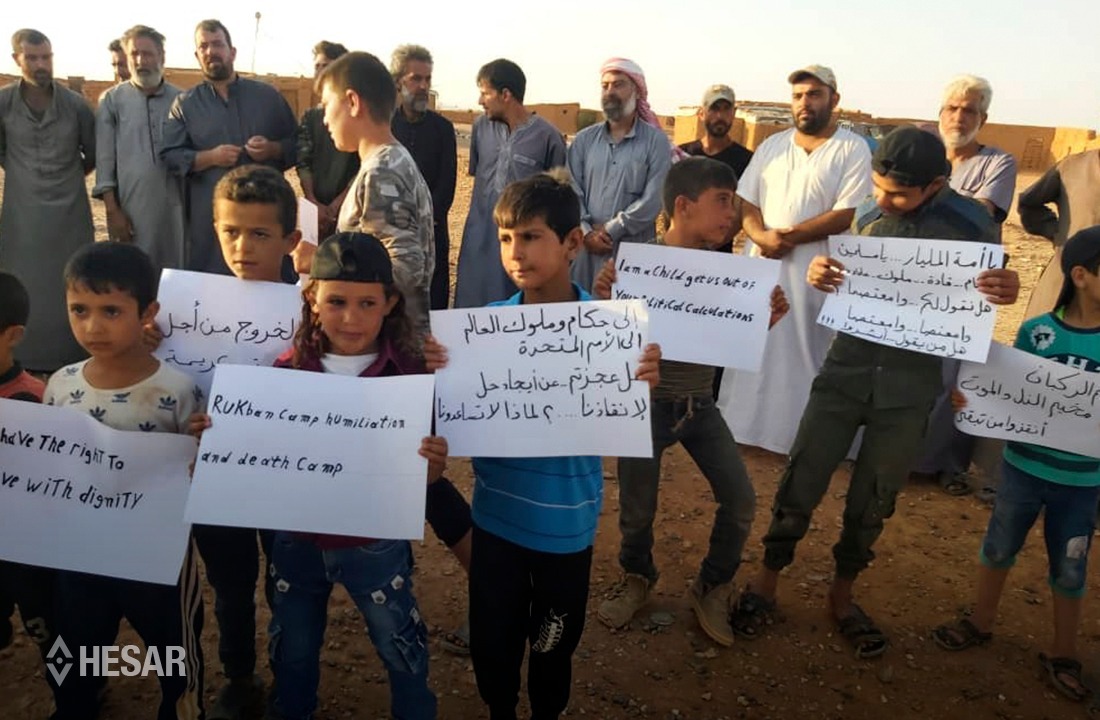
Children holding banners calling for help to the refugees of Rukban camp – August 2022 (Voice of Rukban/Twitter)
Jordan evades responsibility
The Rukban crisis came under focus in March 2020, when Jordan closed, irreversibly, the only medical point that provided first aid and received critical deliveries for camp IDPs.
In April of the same year, Jordan repudiated any responsibility towards the camp, according to a statement by its Foreign Minister, Ayman al-Safadi.
During a call with UN Syria envoy Geir Pedersen, al-Safadi said any humanitarian or medical aid needed by the Rukban camp must come from within Syria, according to a statement by Jordan’s Foreign Ministry.
“[Al-Safadi] affirmed that Jordan will not allow any aid to enter through its lands or any person to enter the kingdom’s territory for any reason and that protecting [Jordan’s] citizens from the coronavirus is a priority,” the statement read.
The Syrian human rights activist, Assem al-Zoubi, explained to Enab Baladi that the Jordanian “evasion” of responsibility for the camp stems from the fact that it is administratively affiliated with the Syrian territories, specifically within the areas of influence of the International Coalition Forces at the al-Tanf base.
From this point of view, Jordanian officials say that the camp is not the responsibility of their country, but he did not deny the existence of Jordanian concerns about Rukban since the attack launched by the Islamic State group in 2016 against Jordanian border guards via a car bomb, al-Zoubi added.
Despite this, Jordan continued to allow aid to enter the camp through the border berm using “large cranes,” including drinking water coming through the United Nations.
In addition, Jordan recorded several statements about restoring its relations with the Syrian regime, of which the refugees had a share, the most prominent of which came from the words of King Abdullah II of Jordan in an interview with CNN last July, during which he talked about relations with the regime and the likelihood of Syrian refugees in Jordan returning to their country.
Jordan’s King hinted at the necessity to deal with the de-facto situation in Syria as Bashar al-Assad is still in power and his regime is still in place, raising the question, “Are we looking for regime change or behavior change?”
The Jordanian stance has taken a different turn in recent years, and this was evident when the Jaber-Nassib border crossing between Syria and Jordan was opened on 29 September 2021, after relations between Syria and Jordan after 2011 witnessed many transformations, as Jordan supported the opposition factions in southern Syria.
Despite the reopening of the crossing and the camp’s residents’ pleas to reopen the medical point, which has been closed since 2020, Jordan did not respond, and the camp remained without medical supplies to meet the need.
Russia confronts US with Rukban camp
Administratively, the desert camp belongs to the areas of influence of the so-called 55-kilometer area, in which the US-led International Coalition Forces are stationed in southeastern Syria along with the local Maghawir al-Thawra faction.
The American al-Tanf garrison in the 55-kilometer area has been a source of concern for the Syrian regime on one side and Russia on the other recently.
Expert Raed Jabr, who covers Russian affairs, considers in an interview with Enab Baladi that the Rukban camp is not a new bargaining chip in the hands of the regime and Russia, as Moscow has always insisted on dismantling the camp, which is linked to the exit of the American side stationed in the region.
Jabr indicated that the use of the Rukban as a pressure card on the Russian side is linked to the Russian escalation against the Americans in the al-Tanf region.
Over the past months, Russia has attempted to skirmish with al-Tanf several times, and it is one of the issues that Moscow currently puts on its list of priorities, and Rukban is no exception.
For its part, the American forces that manage the area are trying to maintain the camp’s existence, providing it with aid that maintains the minimum life necessities.
The most recent of this aid was the opening of the Maghawir al-Thawra Army, on 10 August, with the support of the American forces, the al-Khaffa well, which has been out of work for 11 years, to increase the camp’s water resources.
Rukban-based activists told Enab Baladi that most of the IDPs did not benefit from the maintenance of the well because it is about 53 kilometers away from the camp, but only a few families who are nearby benefit from it.
Syrian regime bargains
The siege policy imposed by the regime on the camp has forced thousands of people to return to its areas since 2019, especially after Jordan completely closed its borders, which the regime considered an achievement that it is talking about through pro-media outlets.
At the end of 2021, the state-run news agency (SANA) reported the death of a child in the camp as a result of the poor humanitarian conditions in it. It also attributed the causes of the deteriorating humanitarian situation in the camp to “the siege by the American occupation forces and their mercenaries from terrorist organizations in the al-Tanf area.”
The Syrian regime deals with the Rukban issue as a “source of concern” in view of the “American failure” to rescue its residents due to the absence of humanitarian aid, according to a statement issued by the Syrian and Russian coordinating bodies, according to what was reported by SANA.
The statement issued in October 2021 indicated that the necessary assistance for the citizens returning from the camp is “provided on state-controlled lands, where all the required conditions are met,” while the humanitarian problems of “the armed men who are sponsored by America in (Rukban)” are entirely American responsibility in this region according to the standards of international law, according to the statement.
UN organizations neglect Rukban
Despite the tightening of the noose on it by the Syrian regime and its Russian ally for years, the conditions of the Rukban camp did not receive any interaction from international and humanitarian organizations.
The Syrian Response Coordination Group (SRCG) on 24 May condemned the siege imposed by the regime forces on the Rukban camp, which prevented the entry or exit of food and medical supplies to the camp, which contains more than 1000 families.
Enab Baladi contacted UNICEF to try to find out the reasons for reducing the amount of water, the most prominent crisis currently in the camp, but it did not receive a response until the moment this file was prepared.
Enab Baladi questioned Amnesty International and Save the Children via email about the reason for neglecting the increasing humanitarian needs in the camp, but no response has been received until the date of publishing this file.
The UN organizations’ neglect of the camp is not limited to the lack of aid, as dozens of reports shed light on the camps in northwestern Syria during the first half of this year, while the Rukban file has been almost absent even from reports that monitor the living situation in Syria.
Timid endeavors
Efforts of the Syrian aid and relief organizations mounted to support various sectors of humanitarian needs in the IDP camps in northwestern Syria, but it did not show a clear movement towards the Rukban camp despite the deteriorating humanitarian situation that topped the local social media accounts more than once, in addition to the UN role that contributed partially in increasing the refugees’ suffering and not addressing it.
Faisal al-Aswad, the emergency response campaigns coordinator for Molham Volunteering Team, told Enab Baladi that many of the team’s attempts to provide aid to the IDP camp’s residents failed as a result of the Jordanian side’s refusal to allow volunteers to enter Rukban through its territories.
The Syrian humanitarian NGO had launched the ‘Save Rukban Camp’ campaign to provide water after the crisis worsened, and it was entered through the regime-controlled areas through coordination with the camp administration, which in turn coordinates with smugglers, according to al-Aswad.
The team official explained that after collecting 25,690 USD, water was secured for 195 families, each of which received 1,899 liters of drinking water, implemented by the camp’s local administration, which distributes water rations.
A few weeks ago, Molham Team was able to operate the camp’s bakery and distribute bread to a thousand families for a month.
In early August, the Emergency Response team launched a campaign, which is considered the first aid campaign by the team, to provide water to the camp’s residents, according to the director of the team’s public relations office, Rahaf al-Ja’a.
In an interview with Enab Baladi, al-Ja’a attributed the absence of previous campaigns in Rukban to what she said was “the absence of statistics by humanitarian organizations for the number of population and needs.”
The value of one share in the water campaign is 50 USD, which is part of the tank, which amounts to about 150 USD, according to al-Ja’a, who also indicated that the team secured about 32 water tanks as part of the campaign.
According to the statistics mentioned by al-Ja’a, the organization has been able to provide water for 820 families comprising about four thousand and 500 people since the launch of the campaign.
Despite the limited assistance provided, it contributes to preventing the people from returning to the areas under the control of the Syrian regime, especially after previous statements by the Minister of Foreign Affairs, Faisal Mekdad, during which he considered the majority of those in the camp to be “ISIS,” which means that any return in this context is not without security risk.
On 3 August, the Syrian Network for Human Rights (SNHR) warned that the return of the people to the regime’s areas could pose a threat to their lives, and expose them to the risk of arrest, enforced disappearance, and torture.
Two solution paths
Humanitarian aid has only entered the Rukban camp twice since the regime took control of the southern region in 2018.
For the first time, a UN aid convoy coming from regime-controlled areas entered the Rukban camp in September 2019, under the supervision of the Syrian Red Crescent.
The last aid convoys were on 9 June, loaded with flour, rice, gas, sugar, and oil, with the support of the US-backed Maghawir al-Thawra forces.
Every year, securing humanitarian aid to northern Syria across the border tops the talk of ambassadors and diplomats on behalf of the countries they represent about the possibility of a real humanitarian catastrophe due to cut-off aid that almost meets the needs of four million Syrians, which is often objected to by the Russian veto or the imposition of new terms of negotiations with the renewal of each mandate for humanitarian aid.
But the humanitarian catastrophe that occurs in Rukban is no less than others due to the specificity of its location and its three-sided surroundings, to which aid rarely enters.
On Security Council table
Presenting the Rukban camp file to the United Nations Security Council (UNSC) requires public civil society organizations in the humanitarian field to present it, Danny al-Baaj, a former Syrian diplomat and non-resident researcher at the Omran Center for Strategic Studies, told Enab Baladi.
The opposition “Syrian Coalition” can begin to act, as it has an office in New York, and the organizations are supposed to have advocacy campaigns that push the concerned countries to speak about the file until it is put on the Security Council table, according to al-Baaj.
If efforts to present the file through Syrian civil society organizations working in the humanitarian and relief field are rejected by states, they can come up with a statement explaining this.
The former diplomat believes that logistical problems can be resolved, through Jordan or through the regime, in the event of a UN decision to deliver aid.
For his part, the co-chair of the Constitutional Committee, Hadi al-Bahra, said in an interview with Enab Baladi that the Rukban file was submitted to the EU and the US.
According to al-Bahra, to bring aid into the camp, there are two lines that the Syrian opposition is working on.
The first is by presenting it to the Security Council by the active countries, which unfortunately face a major obstacle, namely the Russian or Chinese veto.
The second is an attempt to persuade the Americans to provide some services through the American base. Some time ago, the sick residents of the camp began to demand treatment from American doctors present in the American garrison through the Maghawir al-Thawra faction.
This step requires greater American cooperation on the ground by delivering aid to civil society organizations through the American base, a solution that the opposition is likely to reach understandings to implement.
if you think the article contain wrong information or you have additional details Send Correction
النسخة العربية من المقال
-
Follow us :
Most viewed
- Printing Syrian currency in Europe... A file on the table
- Books make a comeback in Damascus libraries after being banned under Assad
- Complex steps to establish new Syrian army
- National Security Council in Syria: A necessity imposed by reality
- SDF-Damascus agreement in Aleppo: A test balloon for broader consensus













 Rukban camp (Rukban Camp/Facebook)
Rukban camp (Rukban Camp/Facebook)





 A
A
A
A
A
A
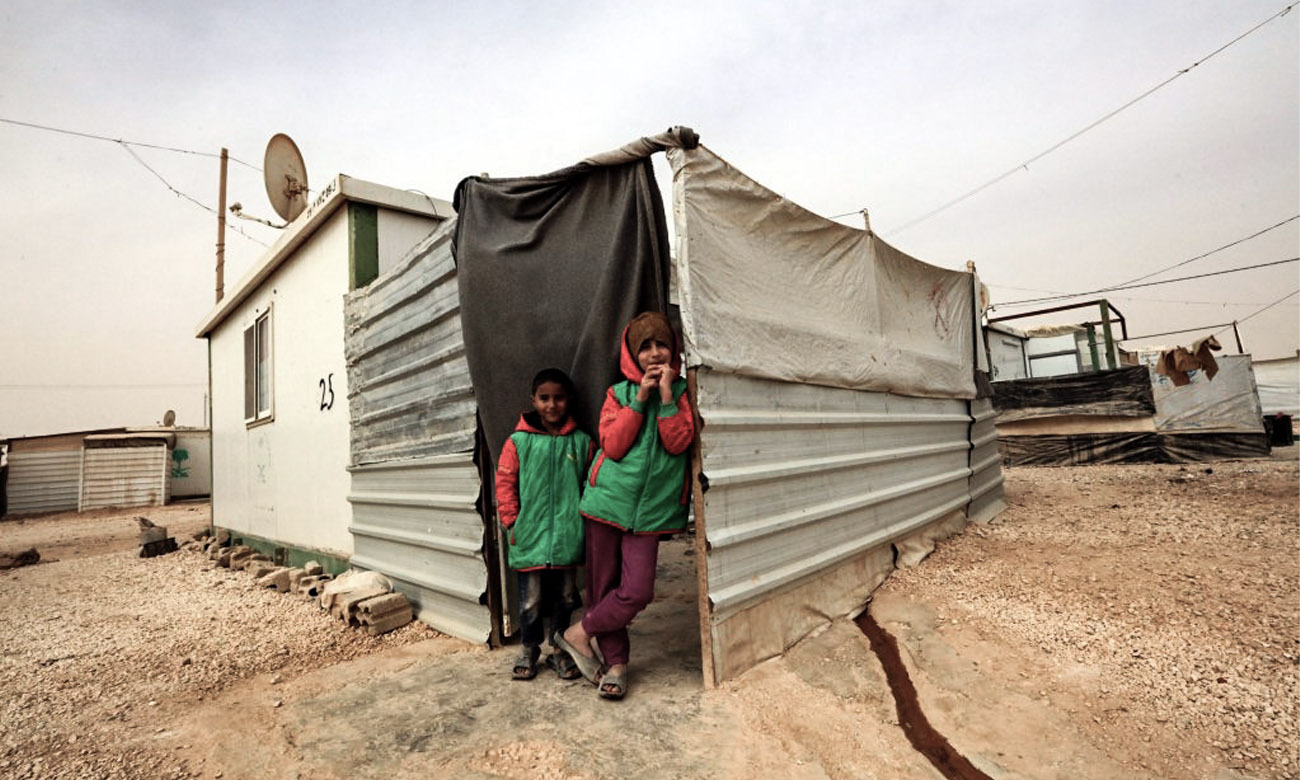
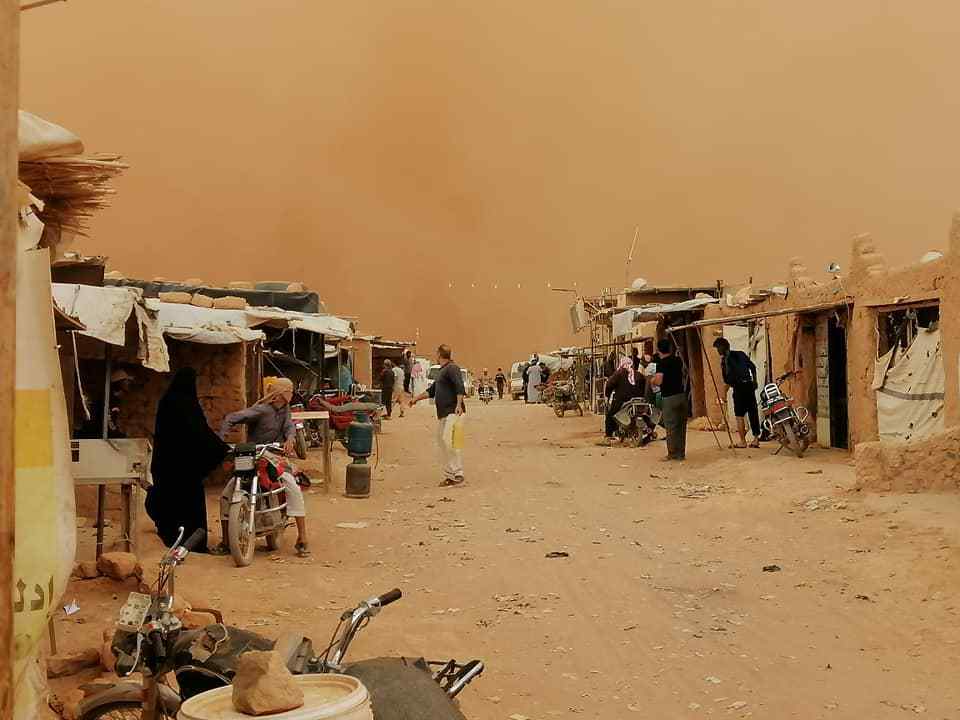
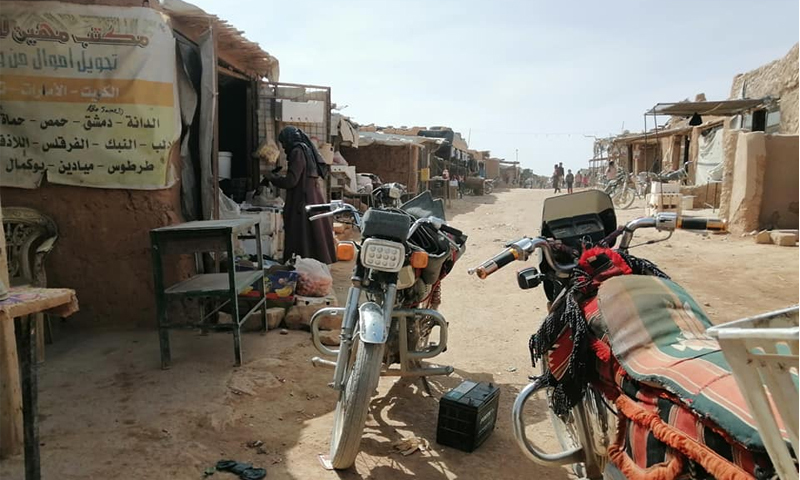
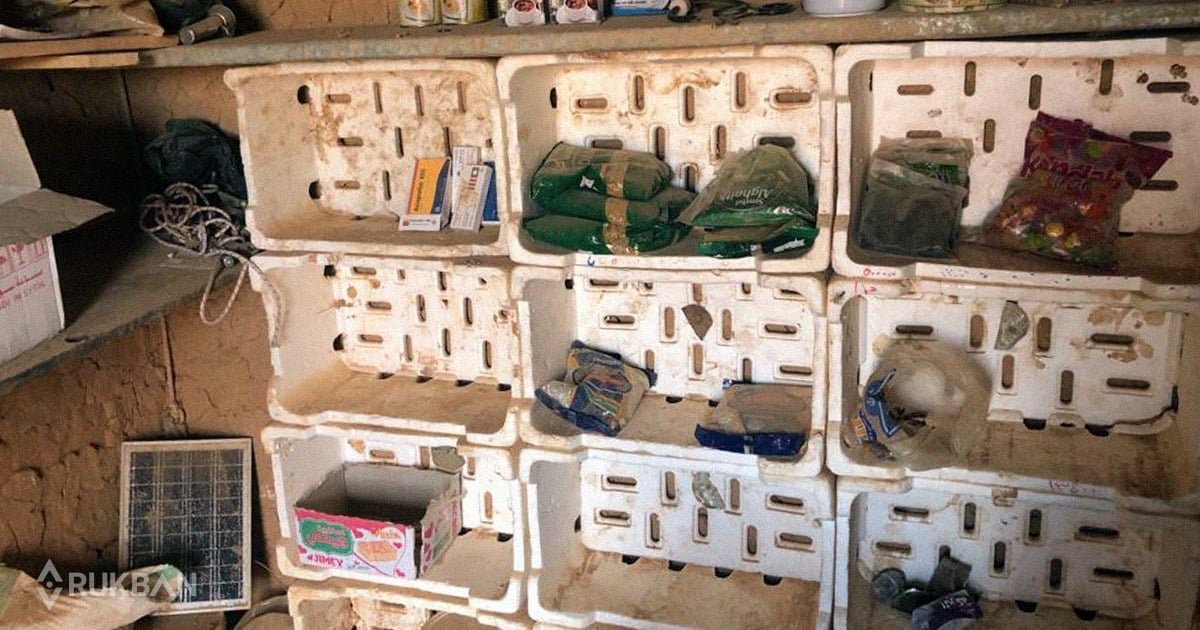





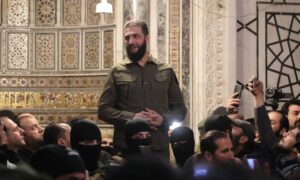
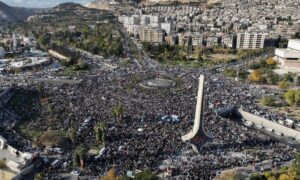
 More In-Depth
More In-Depth